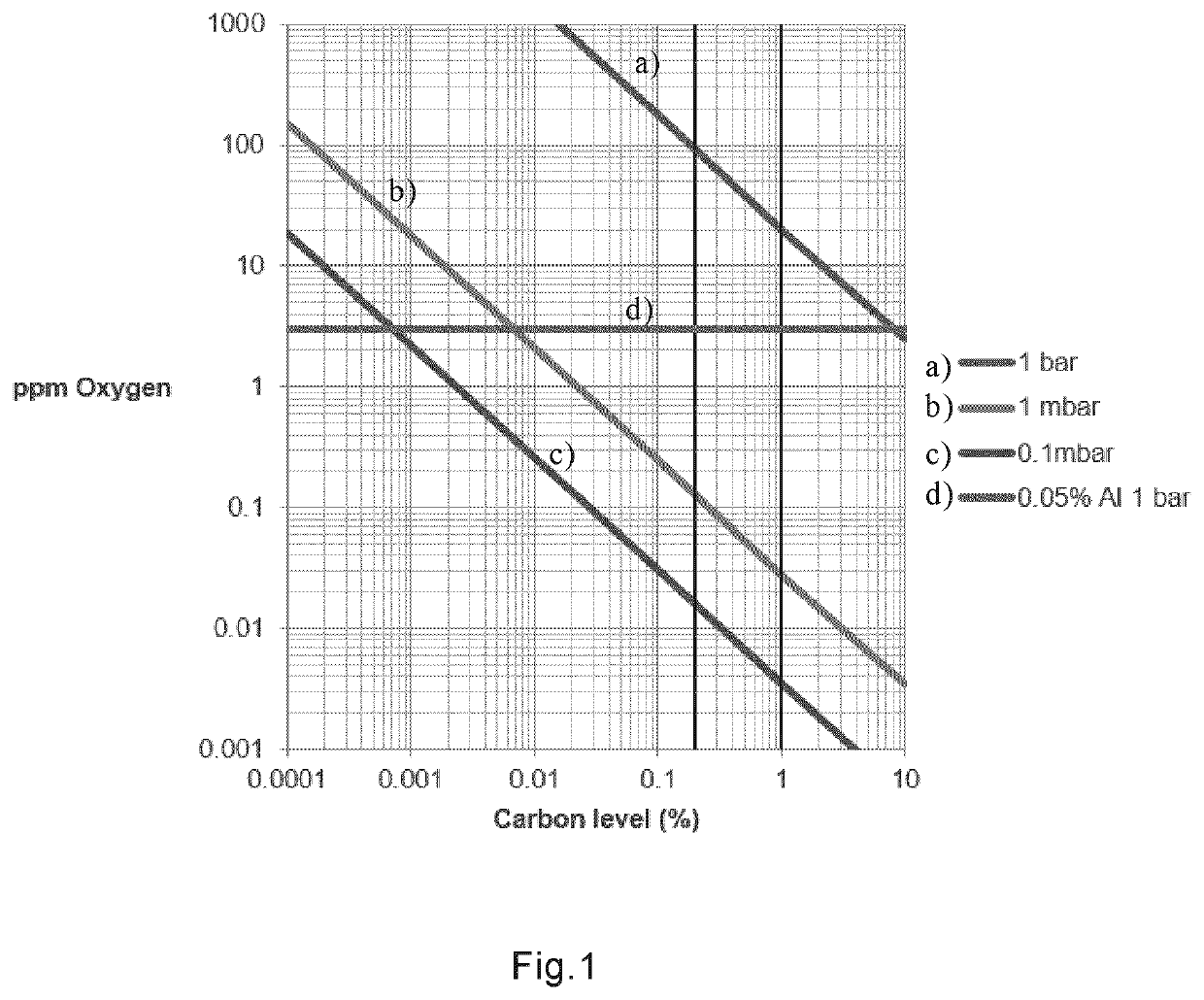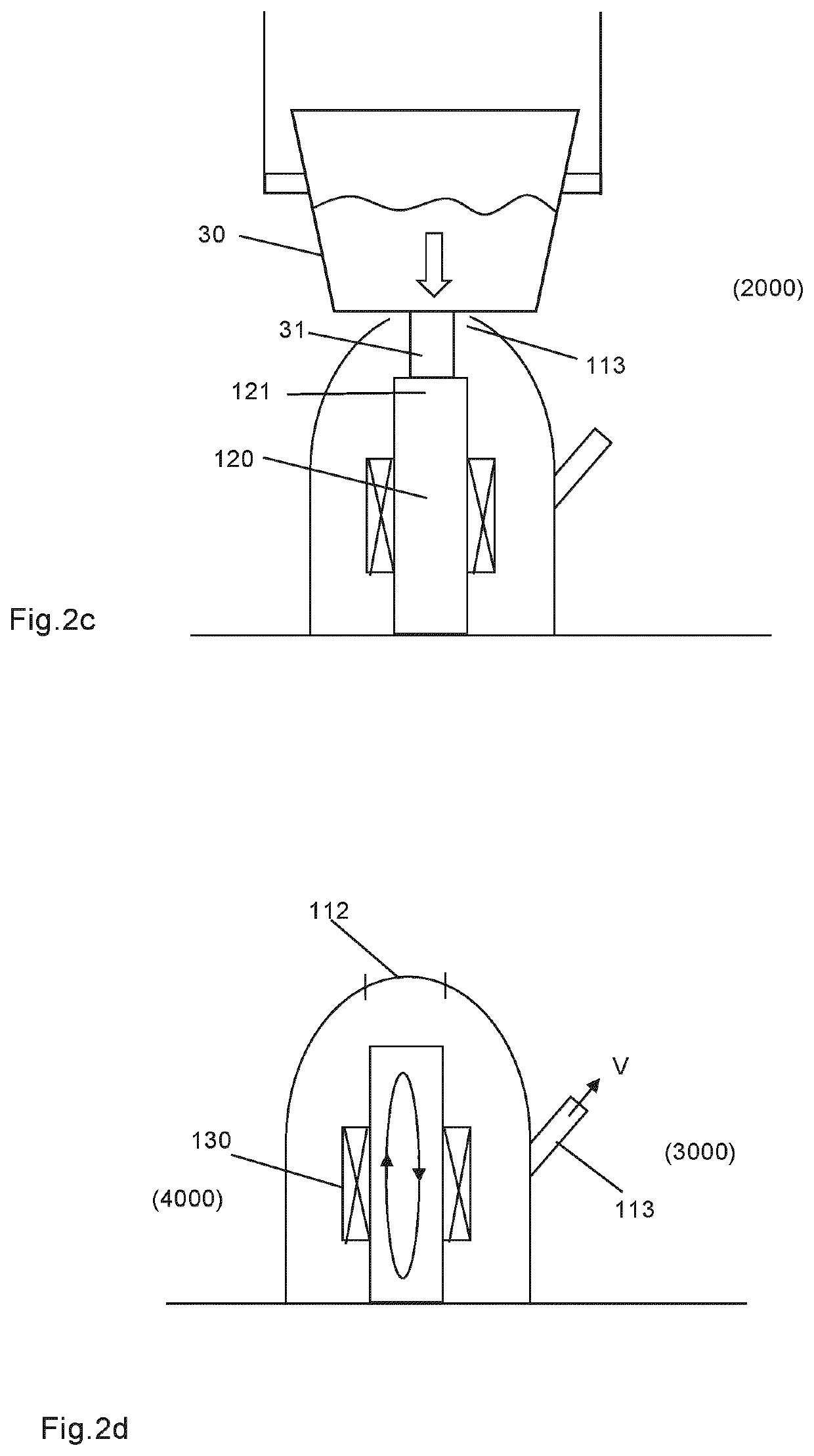A method for manufacturing a steel ingot
a manufacturing method and steel ingot technology, applied in the field of steel ingot manufacturing, can solve the problems of severe re-oxidation, unsuitable industrial steel production, and the described set-up is also unsuitable, so as to facilitate the formation of co-bubbles, improve the mechanical properties of the solidified ingot and products, and reduce the oxygen level in the steel
- Summary
- Abstract
- Description
- Claims
- Application Information
AI Technical Summary
Benefits of technology
Problems solved by technology
Method used
Image
Examples
Embodiment Construction
[0045]The method for manufacturing a steel ingot according to the present disclosure will now be described more fully hereinafter. The method according to the present disclosure may however be embodied in many different forms and should not be construed as limited to the embodiments set forth herein. Rather, these embodiments are provided by way of example so that this disclosure will be thorough and complete, and will fully convey the scope of the present disclosure to those persons skilled in the art. Same reference numbers refer to same elements throughout the description.
[0046]FIGS. 2a shows a first step 1000 of providing a steel melt. The steel melt may be produced by conventional steel making methods including melting steel raw material such as scrap metal in an electric arc furnace 10. The molten steel is poured into a ladle 20 for oxygen reduction and subsequently into a ladle 30 for refinement. The ladle 30 may provide a container for transporting the steel melt in the meth...
PUM
| Property | Measurement | Unit |
|---|---|---|
| Temperature | aaaaa | aaaaa |
| Pressure | aaaaa | aaaaa |
| Pressure | aaaaa | aaaaa |
Abstract
Description
Claims
Application Information
 Login to View More
Login to View More - Generate Ideas
- Intellectual Property
- Life Sciences
- Materials
- Tech Scout
- Unparalleled Data Quality
- Higher Quality Content
- 60% Fewer Hallucinations
Browse by: Latest US Patents, China's latest patents, Technical Efficacy Thesaurus, Application Domain, Technology Topic, Popular Technical Reports.
© 2025 PatSnap. All rights reserved.Legal|Privacy policy|Modern Slavery Act Transparency Statement|Sitemap|About US| Contact US: help@patsnap.com



